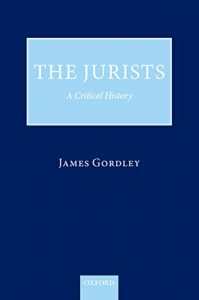The book is an intellectual history of the work of Western jurists from ancient Rome to the present. It discusses the Roman jurists, the medieval civilians and canon lawyers, the late scholastics, the natural law schools of the 17th and 18th centuries, the positivism and conceptualism of the 19th century and its influence on common law, and the reaction against conceptualism since the late 19th century.
Rarely have jurists worked alone. Rather, they have worked in schools, each of which pursued a different project. The projects of the jurists had one element in common: they were attempts to understand and explain the law. Commitment to that project defines the work of a jurist and distinguishes it from the work of others who take part in fashioning and applying the law. Yet the project of each school of jurists had goals and methods of its own. By identifying them, this study shows how
the jurists themselves understood their work and how these goals and methods shaped and limited what each school could achieve.
Rarely have jurists worked alone. Rather, they have worked in schools, each of which pursued a different project. The projects of the jurists had one element in common: they were attempts to understand and explain the law. Commitment to that project defines the work of a jurist and distinguishes it from the work of others who take part in fashioning and applying the law. Yet the project of each school of jurists had goals and methods of its own. By identifying them, this study shows how
the jurists themselves understood their work and how these goals and methods shaped and limited what each school could achieve.












